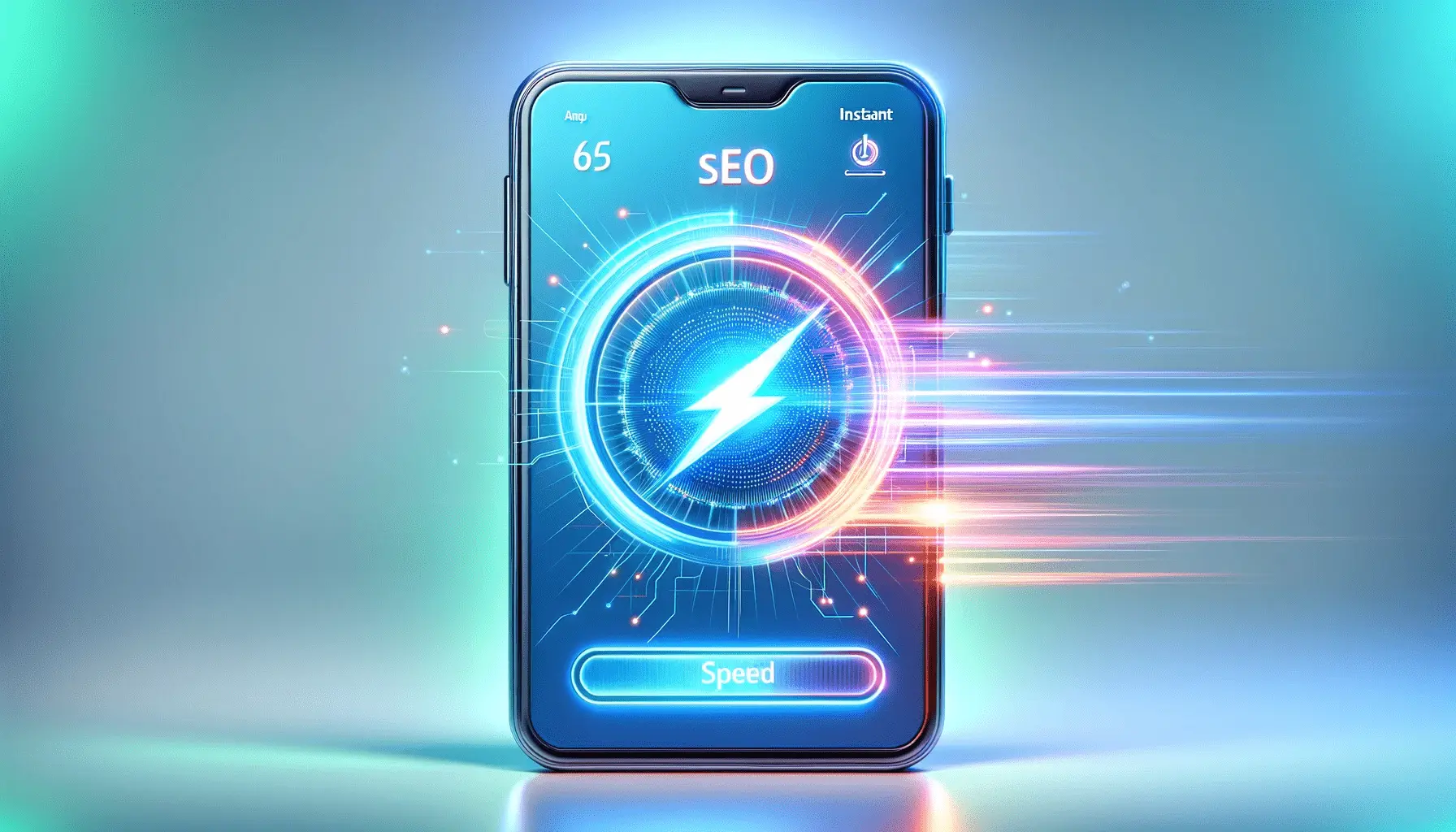In today’s digital age, the speed at which a website loads can significantly impact a brand’s image and its relationship with customers.
A swift and seamless online experience is not just a luxury but a necessity for maintaining competitive edge and customer satisfaction.
This article delves into the importance of optimizing loading times and provides actionable strategies to enhance your brand’s online presence through speed optimization.
Understanding the critical role of loading times in the digital consumer journey is the first step towards optimizing your website.
It’s not just about the wait; it’s about the message it sends to your visitors.
Fast loading times signal efficiency, respect for the user’s time, and a reflection of a brand’s overall performance.
Conversely, slow websites can lead to frustration, decreased engagement, and ultimately, a tarnished brand reputation.
- Why Loading Times Matter
- Key Factors Influencing Loading Times
- Strategies for Speed Optimization
- Advanced Techniques in Speed Optimization
- Monitoring and Measuring Website Speed
- Impact of Mobile Optimization on Loading Times
- Future Trends in Website Speed Optimization
- Embracing the Future of Web Performance
- FAQs on Optimizing Loading Times
Why Loading Times Matter
The significance of loading times extends beyond the initial user impression.
It plays a crucial role in search engine optimization (SEO), affecting your website’s visibility and ranking on search engine results pages (SERPs).
Search engines, like Google, prioritize user experience, with page speed being a key factor in their algorithms.
Thus, optimizing loading times is not only beneficial for user engagement but also essential for improving your site’s SEO performance.
Moreover, the impact of loading times on conversion rates cannot be overstated.
Statistics reveal that even a one-second delay in page response can result in a 7% reduction in conversions.
This highlights the direct correlation between site speed and the bottom line, making it imperative for brands to focus on speed optimization as part of their digital strategy.
Understanding User Expectations
Today’s internet users have high expectations for digital experiences.
With the proliferation of high-speed internet and powerful devices, users expect websites to load almost instantaneously.
A delay of just a few seconds can lead to increased bounce rates, as users are likely to abandon a site that doesn’t meet their expectations for speed.
This section explores the psychology behind user expectations and the importance of meeting these demands for a successful online presence.
It’s not just about the actual waiting time; it’s about perceived performance.
Users’ perception of a brand can be significantly influenced by how quickly they can access information or complete actions on a website.
Fast loading times contribute to a seamless, efficient user experience, reinforcing the brand’s image as reliable and user-centric.
Optimizing your website’s loading times is a critical aspect of providing a superior user experience and enhancing your brand’s online presence.
Key Factors Influencing Loading Times
Several technical elements contribute to the loading times of a website.
Understanding these factors is essential for identifying areas of improvement and implementing effective optimization strategies.
Here, we explore the primary components that influence website speed and offer insights into how they can be optimized for better performance.
Server Response Time
Your website’s server response time is critical in determining how quickly your site can start loading on a user’s device.
A slow server can significantly delay the loading process, affecting the overall user experience.
Optimizing server response time involves choosing a reliable hosting provider, utilizing content delivery networks (CDNs), and ensuring your server is properly configured for peak performance.
Image Optimization
Images are often the largest files on a web page, contributing significantly to loading times.
Optimizing images for the web involves compressing file sizes without sacrificing quality, using the correct image formats, and implementing responsive images to ensure they load efficiently across different devices.
- Compression: Use tools to reduce image file sizes without losing visual quality.
- Formats: Choose the right format (e.g., JPEG, PNG, WEBP) based on the type of image and desired quality.
- Responsive Images: Implement techniques to serve different image sizes based on the user’s screen size and resolution.
Minification of CSS, JavaScript, and HTML
Excess code can slow down your website.
Minification is the process of removing unnecessary characters from code (like whitespace, comments, and new line characters) without changing its functionality.
This reduces the size of your code files, making them faster to download and process.
- CSS: Use tools to minify CSS files, reducing the amount of data that needs to be transferred.
- JavaScript: Minify JavaScript files to speed up parsing and execution times.
- HTML: Minify HTML to remove redundant data and speed up page loading.
Use of Caching
Caching stores copies of files in a temporary storage location so they can be accessed more quickly.
Implementing effective caching strategies can significantly reduce loading times for repeat visitors by storing key resources locally in the user’s browser.
- Browser Caching: Configure your server to set appropriate cache headers for your resources, instructing browsers on how long to store the cached files.
- Server-Side Caching: Use server-side caching to reduce the load on your server and speed up content delivery for dynamic websites.
Optimizing these key factors can lead to significant improvements in your website’s loading times, enhancing user experience and SEO performance.
Strategies for Speed Optimization
Improving your website’s loading times requires a strategic approach to optimization.
By focusing on the most impactful strategies, you can enhance your site’s performance, improve user experience, and boost your SEO rankings.
This section outlines practical strategies for optimizing website speed.
Implementing Content Delivery Networks (CDNs)
A Content Delivery Network (CDN) is a network of servers distributed globally, designed to deliver web content more efficiently to users based on their geographic location.
By caching content on multiple servers around the world, CDNs reduce the distance between the user and the server, significantly improving loading times.
Utilizing a CDN can help offload resources from your primary server, reducing server load and speeding up content delivery.
This is particularly effective for websites with a global audience, ensuring all users receive a fast and consistent experience regardless of their location.
Optimizing Web Fonts
Web fonts are an essential part of modern web design, but they can also add significant load time if not optimized properly.
To minimize the impact of web fonts on loading times, consider the following practices:
- Limit Font Variants: Only include the font styles and weights you actually use on your site to reduce download times.
- Use Font Display Swap: This CSS feature allows you to control how fonts are displayed as they load, preventing invisible text during font loading.
- Host Fonts Locally: Hosting fonts on your own server can reduce external requests and improve loading times.
Lazy Loading of Images and Videos
Lazy loading is a technique that delays the loading of non-critical resources at page load time.
Instead, these resources are loaded at the moment they are needed (e.g., when scrolling down the page).
This can significantly reduce initial page load time, improve user experience, and conserve bandwidth.
Implementing lazy loading for images and videos can be particularly effective, as these are typically the largest files on a web page.
Many modern browsers now support native lazy loading, making it easier than ever to implement this optimization technique.
Reducing Redirects
Each redirect triggers an additional HTTP request, increasing the total loading time for a page.
Minimizing redirects can therefore significantly improve site speed.
Audit your site for unnecessary redirects and eliminate them where possible.
Pay special attention to internal links and resource requests that may be causing unintended redirects.
While no single strategy can guarantee perfect loading times, combining these approaches can lead to substantial improvements in website performance, user satisfaction, and SEO results.
Advanced Techniques in Speed Optimization
Beyond the foundational strategies for improving website speed, there are advanced techniques that can further enhance your site’s performance.
These methods require a deeper understanding of web development but offer significant gains in loading times and user experience.
Critical CSS and Asynchronous Loading
Critical CSS refers to the minimal set of styles needed to render the above-the-fold content of your website.
By identifying and inline embedding this critical CSS directly into the HTML document, you can significantly speed up the initial rendering of your site.
Asynchronous loading of non-critical CSS ensures that the rest of your styles are loaded without blocking the rendering of the page.
This technique improves perceived performance by displaying content to the user more quickly while the rest of the page’s resources continue to load in the background.
Tools and scripts are available to help identify and extract your site’s critical CSS, streamlining the implementation process.
Server-Side Performance Tuning
Optimizing your server’s configuration can have a profound impact on your website’s loading times.
This includes tuning database performance, implementing server-side caching, and optimizing server software settings.
For dynamic websites, using a reverse proxy server like Varnish can cache content closer to your users, reducing load times significantly.
Additionally, regularly monitoring your server’s performance to identify bottlenecks and adjusting your hosting plan or infrastructure as needed can ensure that your site remains fast and responsive as it grows.
Progressive Web App (PWA) Technologies
Progressive Web Apps use modern web capabilities to deliver an app-like experience to users.
PWAs can load instantly, regardless of the network state, providing an immediate and engaging experience for users right from the first visit.
Implementing service workers, which cache the application shell and content, can make subsequent visits load instantly and work offline.
Adopting PWA technologies not only improves loading times but also enhances the overall user experience, making your site more reliable and accessible, even in poor network conditions.
Automating Performance Optimization
Automating the process of optimizing your website’s performance can save time and ensure that best practices are consistently applied.
Tools like Webpack and Gulp can automate tasks such as minification, compression, and image optimization.
Continuous integration (CI) pipelines can be configured to run these tasks automatically as part of your development process, ensuring that your site remains optimized with each update.
Leveraging these advanced techniques requires a commitment to ongoing optimization and monitoring. However, the payoff in terms of improved loading times and better user experiences can be substantial, offering a competitive advantage in today’s fast-paced digital landscape.
Monitoring and Measuring Website Speed
Continuous monitoring and measurement of your website’s speed are crucial for maintaining optimal performance.
Regularly assessing your site’s loading times helps identify slowdowns and pinpoint areas for improvement.
This section outlines effective tools and practices for monitoring website speed and ensuring your optimization efforts are successful.
Utilizing Web Performance Tools
Several web performance tools offer detailed insights into your website’s loading times and performance bottlenecks.
These tools analyze various aspects of your site, providing actionable recommendations for optimization.
Some of the most widely used tools include:
- Google PageSpeed Insights: Offers performance analysis and optimization suggestions for both mobile and desktop versions of your site.
- GTmetrix: Provides a comprehensive analysis of your site’s performance, including loading times, page sizes, and requests, along with optimization recommendations.
- WebPageTest: Allows for detailed performance testing from different locations and browsers, offering insights into load times, render times, and more.
Implementing Real User Monitoring (RUM)
Real User Monitoring collects performance data from actual site visitors, offering insights into how your site performs in real-world conditions.
RUM tools track various metrics, including page load times, user interactions, and device-specific performance.
This data is invaluable for understanding the user experience and identifying optimization opportunities based on actual usage patterns.
Setting Performance Budgets
A performance budget sets limits on certain aspects of your site’s design and development, such as page size, image sizes, and script sizes, to ensure performance goals are met.
By establishing and adhering to a performance budget, teams can make informed decisions about feature additions and design changes, balancing functionality with speed.
Performance budgets help maintain a focus on user experience and prevent performance regressions over time.
Automating Performance Testing
Integrating performance testing into your development and deployment processes can help catch performance issues early.
Automation tools can run tests against your site at regular intervals or as part of the deployment process, ensuring that any changes do not negatively impact loading times.
Continuous integration services can be configured to include performance testing, providing immediate feedback to developers.
Regular monitoring and measurement are key to maintaining fast loading times and ensuring a positive user experience. By leveraging performance tools, implementing RUM, setting performance budgets, and automating testing, you can keep your site optimized and ahead of the curve.
Impact of Mobile Optimization on Loading Times
In an era dominated by mobile browsing, optimizing your website for mobile devices is no longer optional; it’s imperative.
Mobile optimization directly influences loading times, affecting user experience, engagement, and conversion rates on mobile devices.
This section explores the importance of mobile optimization and its impact on website speed.
Responsive Design and Mobile-First Approach
Responsive design ensures that your website adapts seamlessly to any screen size, providing an optimal viewing experience across a wide range of devices.
A mobile-first approach, where the design process starts with mobile devices in mind, prioritizes performance and user experience on smaller screens.
This approach not only improves loading times on mobile devices but also ensures that your site is accessible and user-friendly for the majority of internet users today.
- Fluid Layouts: Use flexible grids and layouts that adjust to the screen size.
- Adaptive Images: Implement techniques to serve different image sizes based on the device, reducing unnecessary data transfer.
- Touch-Friendly Interfaces: Design with mobile interaction in mind, ensuring buttons and links are easily clickable.
Accelerated Mobile Pages (AMP)
Accelerated Mobile Pages (AMP) is an open-source initiative aimed at creating fast-loading web pages for mobile devices.
AMP achieves remarkable speed improvements by simplifying HTML, streamlining CSS rules, and restricting JavaScript usage, leading to instant page loading.
While AMP can significantly boost mobile performance, it’s important to weigh its benefits against potential limitations in functionality and design flexibility.
Optimizing for Mobile Performance
Beyond responsive design and considering AMP, several strategies can enhance mobile loading times specifically.
Prioritizing content loading, minimizing redirects, and optimizing server response times are crucial for mobile users, who may be on slower or less reliable connections.
- Content Prioritization: Load essential content first to improve perceived performance on mobile devices.
- Minimize Redirects: Each redirect can cause delays, especially noticeable on mobile networks.
- Server Response Time: Optimize backend performance to ensure quick server responses, crucial for mobile users.
Neglecting mobile optimization can lead to increased bounce rates, lower engagement, and lost conversion opportunities, underscoring the need for a mobile-centric optimization strategy.
Future Trends in Website Speed Optimization
As technology evolves, so do the strategies for optimizing website speed.
Staying ahead of the curve requires an understanding of emerging trends and technologies that can impact website performance.
This section explores future directions in speed optimization, offering insights into what brands can anticipate and prepare for in the evolving digital landscape.
Adoption of HTTP/3
HTTP/3 is the upcoming third version of the Hypertext Transfer Protocol, promising significant improvements in speed and reliability over its predecessor, HTTP/2.
By utilizing the QUIC protocol, HTTP/3 reduces connection establishment time, improves congestion control, and minimizes the impact of packet loss.
Early adoption of HTTP/3 can offer websites a competitive advantage in speed, enhancing user experience and SEO performance.
AI and Machine Learning in Optimization
Artificial intelligence (AI) and machine learning (ML) are set to play a pivotal role in website speed optimization.
These technologies can analyze vast amounts of performance data to identify optimization opportunities, predict user behavior, and automatically adjust resource loading priorities.
AI-driven optimization could lead to dynamically optimized websites that load faster and perform better based on real-time user interactions and conditions.
Edge Computing and Website Performance
Edge computing brings data processing closer to the end-user, reducing latency and improving load times.
For websites, leveraging edge computing can mean faster content delivery and dynamic content caching at the network edge.
This trend is particularly relevant for global websites, where distance from the server can impact loading times.
Integrating edge computing solutions can significantly enhance the speed and reliability of web content delivery.
Increased Focus on User-Perceived Performance
Future optimization efforts will likely place greater emphasis on user-perceived performance, rather than just technical metrics.
This includes optimizing the critical rendering path, prioritizing above-the-fold content, and employing progressive loading techniques to enhance the user’s perception of speed.
By focusing on how users perceive website speed, brands can ensure a positive experience that keeps users engaged and satisfied.
Staying informed about these future trends and beginning to incorporate them into your website’s optimization strategy can position your brand for success in a rapidly changing digital environment. Embracing innovation and prioritizing speed will be key to delivering exceptional online experiences in the years to come.
Embracing the Future of Web Performance
In the digital era, where every second counts, optimizing loading times has emerged as a cornerstone for crafting superior brand experiences.
As we’ve explored, the journey towards achieving a swift, responsive website is multifaceted, encompassing everything from server configurations to the implementation of cutting-edge technologies like HTTP/3 and edge computing.
The essence of enhancing loading times transcends mere technical adjustments; it’s about fostering a deep connection with users, ensuring their interactions with your brand are seamless, enjoyable, and memorable.
The Centrality of Mobile Optimization
With the ascendancy of mobile browsing, the imperative of mobile optimization cannot be overstated.
A mobile-first approach not only caters to the majority of internet users today but also aligns with search engines’ prioritization of mobile-friendly websites.
The strategies for mobile optimization, including responsive design and Accelerated Mobile Pages (AMP), are not just about speed but about ensuring accessibility and engagement across all devices.
Future-Proofing Your Website
Looking ahead, the landscape of web performance is set to be revolutionized by advancements in technology.
The adoption of HTTP/3, the integration of AI and machine learning for dynamic optimization, and the utilization of edge computing are poised to redefine what it means to have a fast-loading website.
These emerging trends offer a glimpse into a future where website speed optimization is more automated, intelligent, and closely aligned with user expectations.
- HTTP/3 promises to make websites faster and more reliable than ever before.
- AI and machine learning will automate and personalize the optimization process.
- Edge computing will reduce latency and improve content delivery speeds.
Conclusion
In conclusion, optimizing loading times is a critical endeavor that demands ongoing attention and adaptation.
As we navigate the evolving digital landscape, the focus must remain on delivering exceptional user experiences through fast, responsive websites.
By embracing the strategies and technologies discussed, brands can ensure their online presence is not only optimized for today’s demands but is also prepared for the future of web performance.
The journey towards better loading times is continuous, reflecting a commitment to excellence and a deep understanding of the user’s needs.
In this journey, every millisecond saved is a step closer to building stronger, more meaningful connections with your audience.
Quality web design is key for a great website! Check out our service page to partner with an expert web design agency.
FAQs on Optimizing Loading Times
Explore common queries about enhancing website performance through optimized loading times.
A good page load time is generally below 2 seconds. For mobile devices, aiming for less than 1 second is ideal to keep user engagement high.
Image optimization reduces file sizes without sacrificing quality, significantly decreasing the amount of data transferred during page loads and improving speed.
Caching stores copies of files, allowing browsers to load previously visited pages more quickly, reducing server load and improving overall website speed.
Yes, reducing HTTP requests by minimizing the number of elements on a page can significantly improve loading times by decreasing the amount of data that needs to be fetched.
A CDN distributes your content across multiple servers worldwide, reducing the distance to users and speeding up content delivery and page loading times.
Mobile optimization ensures your site loads quickly on mobile devices, where users expect fast performance and are more likely to abandon slow-loading sites.
Server response time is critical; a faster server response leads to quicker page rendering, enhancing the overall speed of your website for visitors.
Minifying CSS, JavaScript, and HTML by removing unnecessary characters can significantly reduce file sizes, leading to faster download and execution times.











